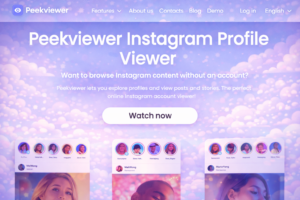Having a solid marketing plan in the healthcare industry is not only helpful, but it has become very important.
Due to rising saturation in the market, it has become imperative for healthcare providers to stand out to thrive in the long term.
While effective marketing is helpful, the right marketing is essential for small practices. Now the question on the table is, which one is better, conventional offline marketing or online healthcare marketing?
The answer depends on the return on investment (ROI) that the healthcare marketing agency provides from both offline and online strategies.
To find out, let’s dig deep into the scope of both these marketing approaches by analyzing various perspectives.
Whether you’re running a small clinic or leading a top-tier healthcare brand, investing in the right corner is equally important for you.
So, without any further delay, let’s get straight into it.
Why the Offline vs Online Healthcare Marketing Debate Matters in 2025?
Imagine you burned the midnight oil to become a doctor, and when you finally start your own practice, you’re wondering, “How will patients find me?”.
The answer to this question lies in a solid marketing strategy. However, as of 2025, the world is solely relying on digital marketing strategies to escalate their business because the end consumer is lurking on Google and social media, making it a lucrative opportunity to increase engagement through the comfort of the internet.
It is faster, better, convenient, and profitable than traditional expensive offline marketing strategies.
However, in the healthcare industry, the value of offline marketing cannot be totally neglected either.
Unlike other industries, the goal of healthcare is not limited to making a profit but to leave a lasting impression and come forward as a go-to partner in the wellness journey.
As a healthcare provider, your target audience looks beyond treatment, including comfort, care, and empathy, which offline healthcare marketing delivers better.
So you might be looking for a combined patient acquisition strategy. Hence, the argument about better results between offline and online healthcare marketing is debatable.
What is Online Healthcare Marketing?
Online healthcare marketing is a campaign of promoting healthcare services of providers by digital means (the internet).
Unlike offline marketing, digital healthcare marketing has a broader scope of obtaining desired results by optimizing websites to appear higher on Google SERP.
This involves a series of other strategies, including focused email marketing, social media campaigns, and broadcasting targeted ads.
Another highly effective tactic is SEO for medical professionals, which helps healthcare providers improve their online visibility and attract more relevant patient traffic through search engines.
You can also gain access to trackable metrics to know exactly how many people clicked, called, or booked through your efforts.
Above all, you can target specific groups, whether by age, condition, or location, making your campaigns much more focused.
Plus, when done right, digital tools support HIPAA-compliant marketing, ensuring patient data stays protected.
All in all, it’s a smart and scalable strategy that delivers measurable outcomes, unlike a billboard, where you can only hope the right people see it.
What is Offline Healthcare Marketing?
Offline healthcare marketing, as the name suggests, is a traditional way of promoting healthcare practices such as advertisements in newspapers, TV, billboards, brochures, mail postcards, and community events.
Honestly, there’s still some charm and effectiveness to these methods as they help build local recognition for healthcare providers.
People might still feel a sense of trust when they see your clinic’s name in the local paper or watch it on a TV commercial.
Showing up at community events? That’s a great way to interact face-to-face and build real relationships that can lead to loyal patients.
Even in some situations, a quick radio mention might even bring someone through your doors that same day.
However, offline healthcare marketing has its drawbacks as well; for instance, it’s harder to track what’s working and what’s not.
You might run a commercial ad, but how do you really know if that’s providing you with the expected results?
Further, it’s usually more expensive, and let’s face it, not everyone is tuning into traditional media anymore.
With that said, if your practice thrives on local visibility, these strategies can still be useful; however, remember that being seen doesn’t always mean being chosen.
ROI in Offline vs Online Healthcare Marketing
To identify the effectiveness of both online and offline healthcare marketing, return on investment (ROI) is the best way to measure.
In marketing, ROI is all what makes a difference, to really understand ROI, you have to look at metrics like cost per acquisition (how much you spend to get one new patient), conversion rates (how many people take action after seeing your campaign), and the lifetime value of a patient (how much they bring to your practice over time).
Here’s where online healthcare marketing often wins.
With digital tools, you can track performance with precision like A/B test ad copy, measure clicks, and quickly adjust underperforming campaigns.
On the other hand, offline strategies lack that kind of visibility. You might get more calls after a TV ad, but there’s no way to confirm where they came from; that’s why digital healthcare campaigns generate better ROI than conventional marketing.
However, conventional healthcare marketing is a powerful tool for building long-term community trust, which makes it an important strategy to adopt.
Adopt the Right Patient Acquisition Strategy
Are you wondering which marketing path is best?
The answer is both. In 2025, patients begin their healthcare journey online more than ever, especially younger ones who rely on Google, Facebook, and Instagram for recommendations and information.
While older patients might still appreciate a printed flyer or local newspaper ad, and for highly specialized services, a well-placed billboard can raise awareness, if it’s paired with a website or landing page where interested patients can learn more.
The best approach suggested by an expert healthcare marketing agency like Physicians Digital Services is a hybrid one.
First, identify your target demographic, then build a base with online healthcare marketing to tap into today’s digital-first behavior.
Afterwards, supplement that with offline healthcare marketing tactics that enhance trust and visibility.
Most importantly, track your results, analyze what’s working, and optimize as you go. A blended strategy gives your message more reach, better returns, and ultimately a more efficient path to patient growth.
Conclusion
When it comes to growing your practice in 2025, online healthcare marketing is hard to beat.
It gives you measurable results, real-time updates, and room to scale without blowing your budget, but that doesn’t mean you should ignore the power of traditional marketing.
Adding a blend of offline healthcare marketing, like community events or local ads, helps you build trust where it matters most. It’s no longer about choosing one over the other.
The best results come when both work together, digital drives visibility and conversions, while offline strengthens your brand’s local presence.
A robust healthcare marketing ROI looks like this: affordable campaigns that keep improving, patient acquisition strategies that truly fit your audience, and HIPAA-compliant marketing that keeps patient data safe.
Frequently Asked Questions
Can small clinics benefit from online healthcare marketing?
Absolutely! Online healthcare marketing helps small clinics attract local patients, track results, and grow steadily without overspending on traditional ads.
What makes online healthcare marketing better for ROI?
It’s trackable, targeted, and adjustable in real time, meaning you only spend on what actually brings patients through your doors.
Is offline healthcare marketing still effective in 2025?
Yes, especially for building local trust, but it works best when paired with strong online strategies for measurable results.
How can I know which patient acquisition strategy is right?
Start by knowing your audience, and combine digital tools with offline touchpoints to create a well-rounded, high-return marketing strategy.
What’s the biggest difference between offline and online marketing?
Tracking and targeting online lets you see what’s working and adjust instantly, while offline results are often harder to measure.
Recommended articles:









